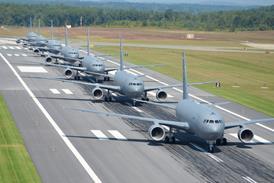Amid much ‘smoke’, ballyhoo and theatrical wizardry, the mighty Rolls-Royce announced a completely new turboprop engine at the show yesterday.
The new RR500 is certainly big news here at AirVenture as the sometimes understated – but hugely economical - turboprop continues its Lazarus-like resurgence in the wake of astronomical oil prices.
When R-R announced at 2007’s HAI convention that it was to launch a brand-new engine – the RR300 – to power the new Robinson R66 5-seat helicopter, the company was soon under pressure to introduce a turboprop version.
 |
|---|
“Many owners/operators of larger piston-powered singles and twins around the world are worried about the non-availability of LL100 Avgas,” says R-R’s Indianapolis-based president, helicopter and small GA engines, Ken Roberts.
“We’ve even heard of operators having to ship barrels of LL100 from country to country to keep them flying.”
The new RR500 “runs happily on any form of aviation kerosene including some of the more obscure versions found in China and CIS countries”, says Roberts. The core of the RR300 has been up-sized to give the new turboprop better performance at heights up to FL120, with a larger single-stage centrifugal compressor, making this a 500shp-class engine. The engine’s reduction gearbox can be set either to 2,090rpm or 2,400rpm at the time of manufacture.
“This new engine is a very simple, robust and economical design,” explains Roberts, “and its power density, smoothness, operability, noise footprint and weight (102kg) are – we believe – without equal.”
Roberts says that “supplemental type certificates are a distinct possibility for retrofitting as well as supplying the engines as original equipment for singles, twins or even three-engined aircraft as the RR500 is much lighter, more compact and more reliable – with its electronic engine monitoring system - than its reciprocating cousins.”
TBO for the new engine is 2,000hrs and all the moving parts within the engine are ‘lifed’ in multiples of the same interval so that maintenance should be both economical and simple as with typical usage the engine should be OK for seven to eight years between shop visits. FAA certification expected in the next two to three years following first engine to test (FET) next year.
Source: Flight International























